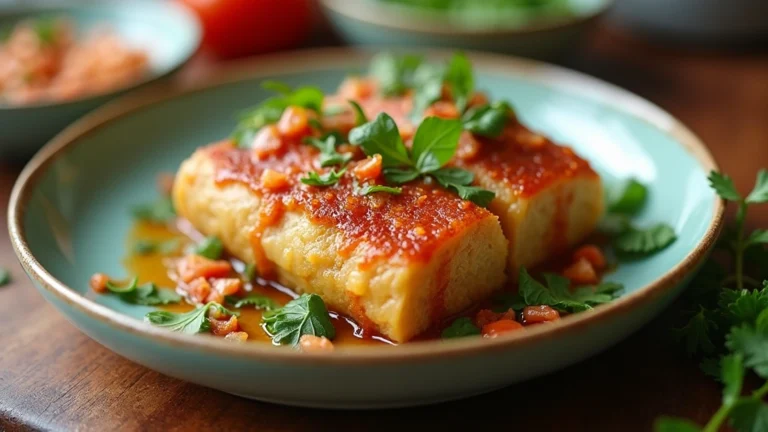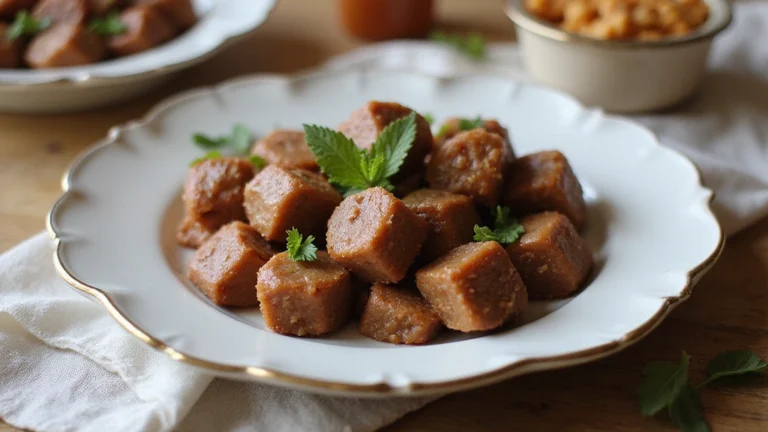
Bap cai, or stir-fried cabbage, is one of those simple yet comforting dishes that instantly feels like home. It’s a staple in many Asian kitchens, celebrated for its versatility and ability to pair beautifully with almost anything. Whether it’s served as a side dish or enjoyed on its own, bap cai brings a delightful balance of crunch and savory goodness to the table.
What Is Bap Cai?

Bap cai, translated as “cabbage” in Vietnamese, is a beloved dish found in many Vietnamese and broader Asian kitchens. While it often refers to stir-fried cabbage, the term can also encompass variations like soups or stews featuring cabbage. Our focus, however, is the stir-fried version—a quick and flavorful dish that celebrates the natural sweetness and crunch of this humble vegetable.
This dish is renowned for its simplicity and adaptability. Whether we prepare it with a splash of fish sauce, a pinch of garlic, or elevate it with thin slivers of pork or shrimp, bap cai consistently delivers a satisfying balance of savory and sweet. Its light seasoning allows the core ingredient—fresh, crisp cabbage—to shine, making it a go-to side dish or even a light main meal when served with a bowl of steamed rice.
Ingredients
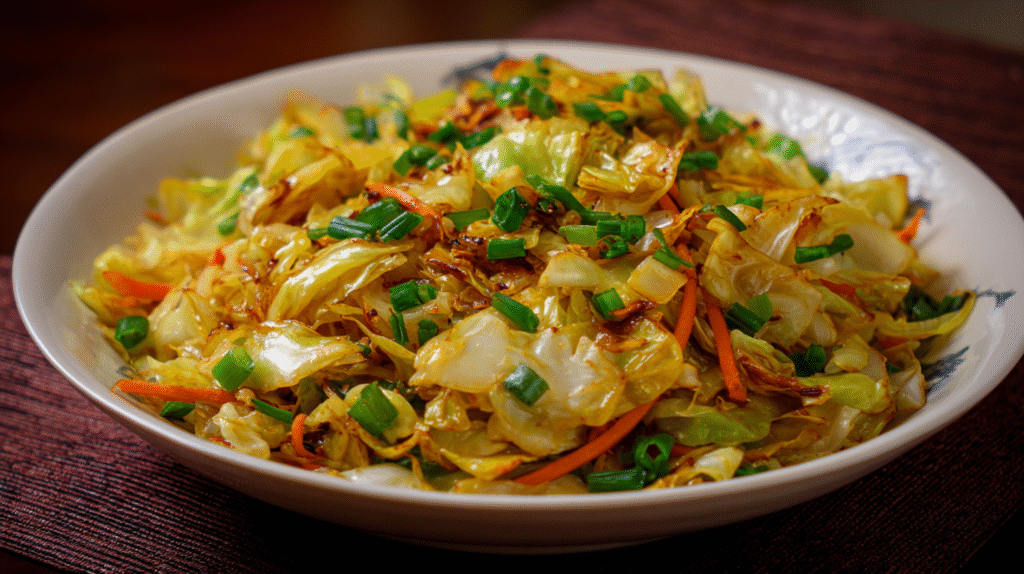
Here’s what we’ll need to prepare our delicious bap cai:
Main Ingredients
- 1 medium green cabbage: Quartered, with outer leaves removed and core discarded. For this recipe, green cabbage gives the best balance of texture and sweetness, but feel free to use Napa cabbage as a softer alternative.
Filling Ingredients (if making cabbage rolls or variations)
- 1 lb ground pork: Opt for ground pork with a bit of fat for added flavor and moisture.
- 3-4 wood-ear mushrooms: Rehydrated in boiling water for 15 minutes, then finely chopped.
- 2-3 shiitake mushrooms: Rehydrated similarly to the wood-ear mushrooms, then chopped finely.
- 3 garlic chives (stems/chopped blades): The smaller blades are chopped and added to the filling, while the long, mature blades are reserved for tying, if crafting rolls.
Seasonings (optional for stir-fried or soup variations)
- 2 minced garlic cloves: Adds aromatic depth.
- 2 tablespoons fish sauce: Enhances the dish’s umami and ties in traditional Vietnamese flavors.
- 1/2 teaspoon black pepper: For a subtle hint of heat.
These ingredients work beautifully across variations, from stir-fried bap cai to Vietnamese cabbage soup, adapting to personal tastes while maintaining their comforting core.
Tools And Equipment
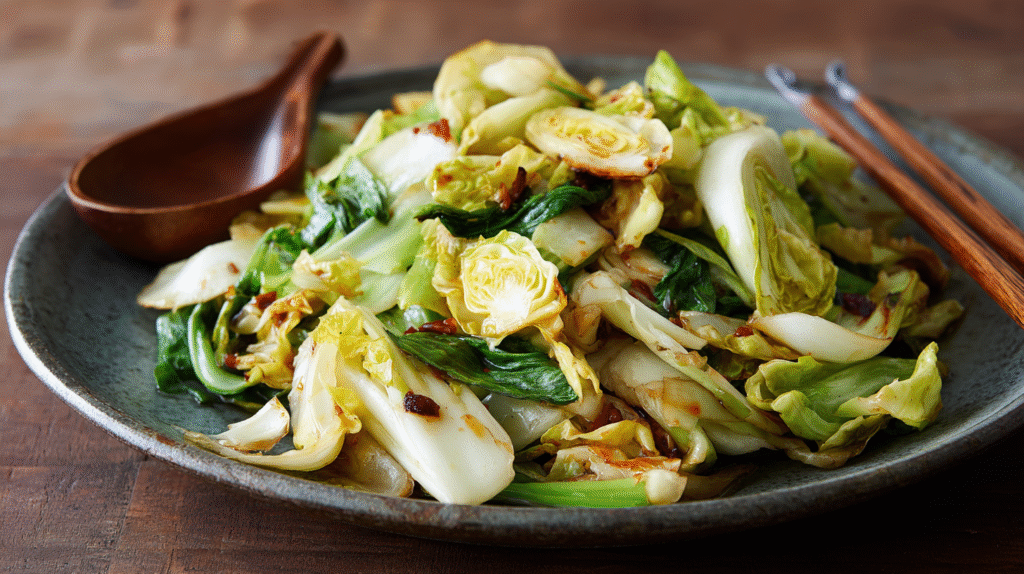
When preparing bap cai, having the right tools on hand makes the cooking process smooth and enjoyable. Below are the essential items we recommend:
- Chef’s Knife: A sharp chef’s knife is crucial for slicing the cabbage evenly and quickly. Uniform slices ensure even cooking and excellent texture for the dish.
- Cutting Board: Opt for a sturdy cutting board large enough to accommodate a whole cabbage. This helps keep the prep space organized and safe.
- Wok or Large Skillet: A wok is ideal for stir-frying bap cai because its shape distributes heat evenly, allowing the cabbage to cook perfectly. However, a large skillet works well too if a wok isn’t available.
- Spatula or Wooden Spoon: Use a spatula or wooden spoon to toss the cabbage and other ingredients effectively without damaging the wok’s surface.
- Mixing Bowl: A mixing bowl is handy for prepping additional ingredients like mushrooms, garlic, or proteins before adding them to the pan.
- Measuring Spoons: Accurately measure seasonings like fish sauce and black pepper to balance flavors in the dish.
- Small Saucepan (Optional): If you’re experimenting with variations like Vietnamese cabbage soup, a saucepan is a useful addition for preparing broths or boiling cabbage rolls.
By assembling these tools, we set ourselves up for success, ensuring that every step, from slicing to sautéing, goes effortlessly.
Directions
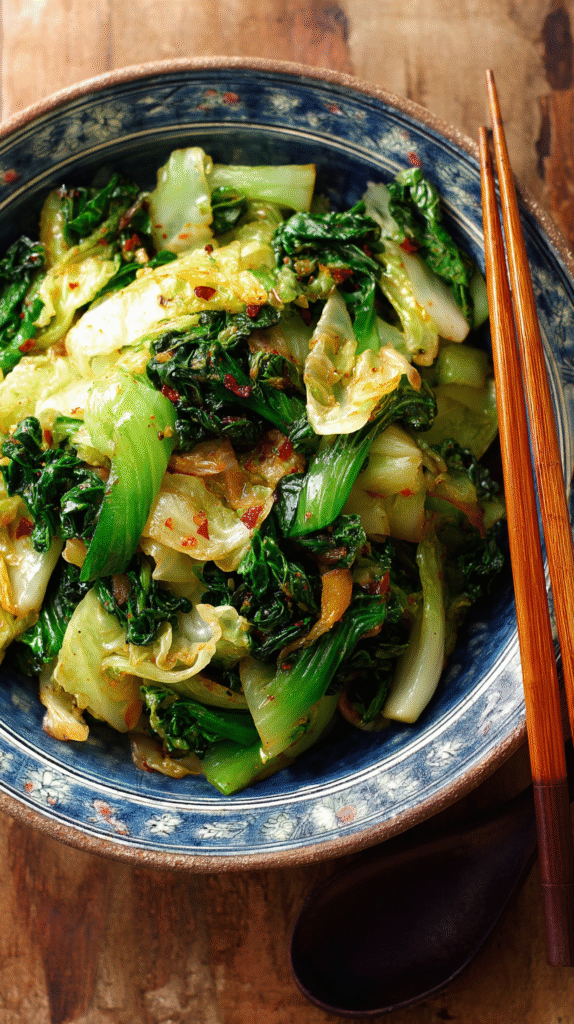
Let’s dive into making a delicious batch of bap cai. We’ll guide you from prepping your ingredients to cooking this delightful Vietnamese cabbage dish.
Prep The Ingredients
- Cabbage: Slice one medium green cabbage into thin strips, discarding the core. If using napa cabbage, separate the leaves and cut them into manageable pieces.
- Other Vegetables: Julienne one medium carrot and mince two shallots. Optionally, grate a small piece of ginger for added warmth.
- Proteins and Mushrooms:
- Rehydrate 2 tablespoons of wood-ear mushrooms and 4 shiitake mushrooms in warm water for 20 minutes, then dice them finely.
- For protein, prepare 8 ounces of ground pork or peeled shrimp, ensuring they are clean and ready to cook.
- Herbs and Seasonings: Finely chop 3-4 garlic chives and set aside. Combine 2 tablespoons of fish sauce, 1 teaspoon of bouillon powder, and a pinch of black pepper in a small bowl for quick seasoning during cooking.
Preparing The Bap Cai
- Heat your wok or large skillet over medium heat until hot. Add 2 tablespoons of oil to coat the bottom.
- Sauté the minced shallots and ginger (if using) for about 30 seconds until fragrant.
- Add the ground pork or shrimp to the pan. Stir consistently until the protein is fully cooked and lightly browned, about 3-5 minutes.
Cooking The Bap Cai
- Push the cooked protein to one side of the pan. Add the cabbage, julienned carrots, and diced mushrooms to the empty space. Toss for 2-3 minutes until the vegetables are slightly softened.
- Pour in the seasoning mixture (fish sauce, bouillon powder, and black pepper) and stir everything together. Cook for another 2-3 minutes, letting the flavors blend.
- Sprinkle the chopped garlic chives over the dish. Toss lightly and cook for an additional minute.
Serving Suggestions
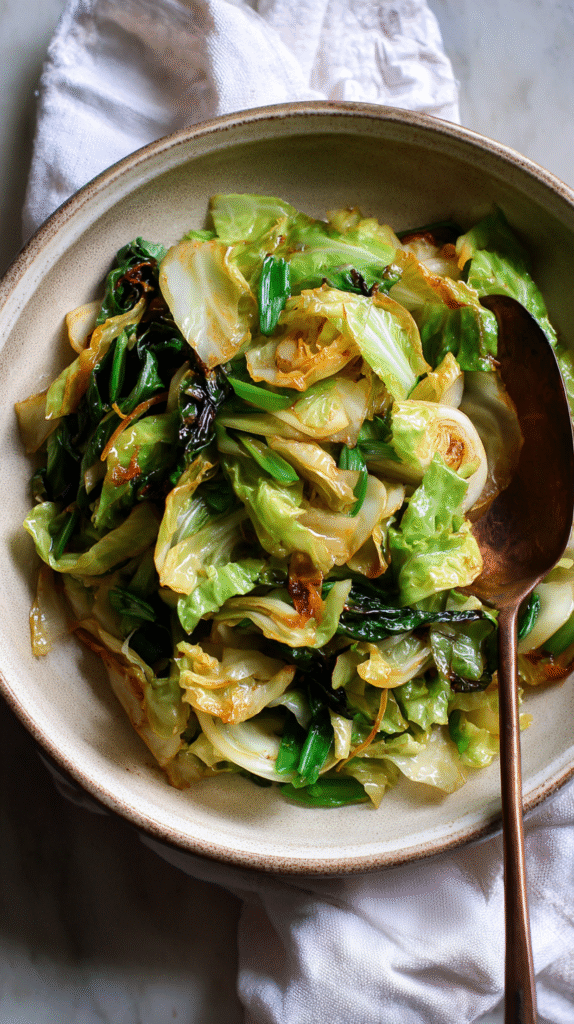
When it comes to serving bap cai, there are a variety of ways to bring out its best flavors and textures depending on the meal and occasion. One of our favorite methods is to pair stir-fried bap cai with a warm bowl of steamed rice. The dish’s natural sweetness, slight crunch, and savory notes from garlic or fish sauce make it a perfect side for grilled meats or fried fish. Adding a fried egg on top turns it into a satisfying standalone meal.
For a lighter option, we can serve bap cai as part of Goi Ga Bap Cai (Vietnamese Chicken Salad). The shredded cabbage adds a satisfying crunch when paired with poached chicken and fresh herbs. It’s brightened by a tangy dressing made of lime juice, fish sauce, and chili, offering a fresh and vibrant way to enjoy cabbage as a salad.
Another excellent way to enjoy bap cai is in a comforting bowl of Vietnamese cabbage soup. Softened green cabbage simmered in a flavorful broth with ingredients like ground pork or shrimp creates a hearty yet light soup. This version is wonderful as a starter or a warming dish on cooler days.
We can also wrap sauteed cabbage with pork or mushrooms into cabbage rolls, steaming them for a delightful and filling dish. No matter how we choose to serve it, bap cai remains a versatile, nutrient-packed option that complements both simple weeknight dinners and elaborate feasts.
Make-Ahead Instructions And Storage Tips
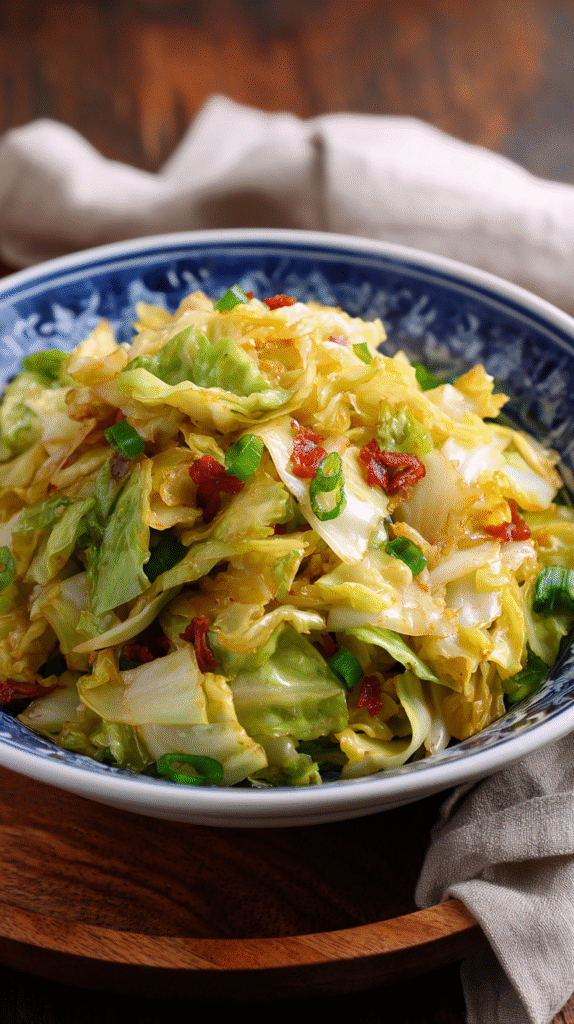
To simplify your cooking process and enjoy bap cai at its best, preparing ahead and storing properly can make all the difference. Here’s how we recommend managing your ingredients and cooked dish:
Making Ahead
- Preparing Vegetables and Proteins: Slice the cabbage, julienne the carrots, and mince the shallots in advance. Store these prepared vegetables in separate airtight containers in the fridge for up to 2 days. If you’re using ground pork or shrimp, you can also season them ahead of time with garlic, fish sauce, and black pepper to let the flavors meld. Ensure they are refrigerated properly.
- Rehydrating Mushrooms: If your version of bap cai includes wood-ear or shiitake mushrooms, soak and rehydrate them earlier in the day. Once they are softened, store them in a bowl of water in the fridge until you’re ready to use them.
- Blanching for Vietnamese Cabbage Soup: For variations like Vietnamese cabbage soup, consider blanching the cabbage leaves a few hours in advance. This saves time when you’re ready to simmer them in broth.
Storage Tips
- Leftover Bap Cai: Store cooked bap cai in an airtight container in the refrigerator. It keeps well for up to 3 days. Rewarm it in a wok or skillet over low heat, adding a dash of water to retain moisture.
- Freezing: While stir-fried bap cai is best enjoyed fresh, you can freeze portions in freezer-safe bags for up to 1 month. This works especially well for cabbage soup or cabbage rolls, ensuring the flavors stay locked in without losing their comforting essence. To reheat, thaw in the refrigerator overnight and warm gently on the stove.
By planning, you can ensure that your bap cai or variations like Vietnamese cabbage soup remain flavorful and fresh, no matter when you decide to serve them.
Conclusion
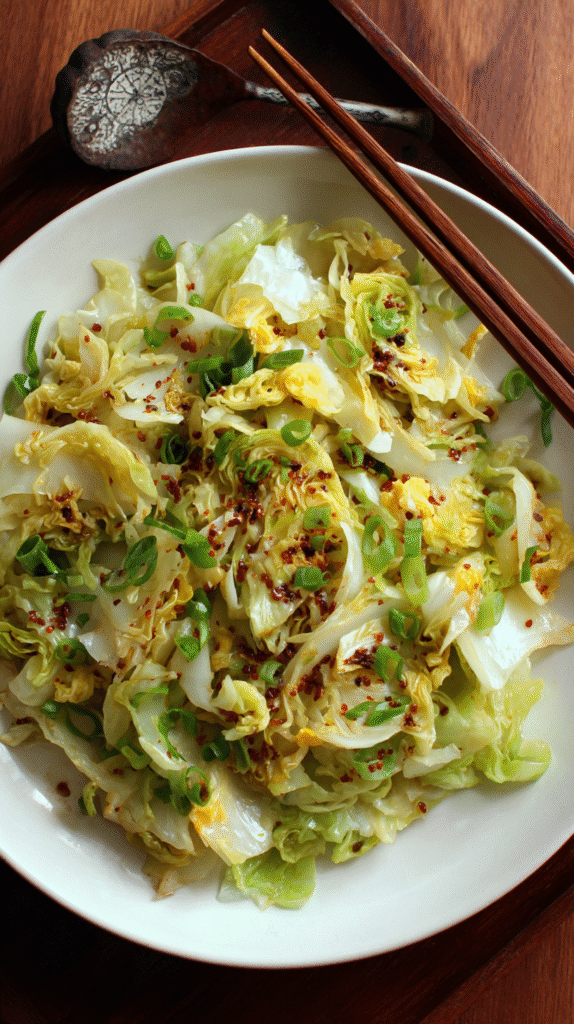
Bap cai is more than just a dish; it’s a celebration of simplicity and flavor that fits seamlessly into any meal. Whether we’re savoring it as a quick stir-fry or experimenting with creative variations, this humble cabbage dish never fails to impress. Its adaptability and ease make it a joy to prepare, while its comforting taste keeps us coming back for more.
With a few fresh ingredients and the right tools, we can whip up a dish that feels like home every time. Bap cai reminds us that even the simplest recipes can bring so much warmth and satisfaction to our table.
Frequently Asked Questions
What is bap cai?
Bap cai is the Vietnamese term for “cabbage” and commonly refers to a stir-fried cabbage dish. It’s a simple yet versatile dish often served as a side or light main meal. Known for its crunch and natural sweetness, bap cai is a staple in many Asian kitchens.
What ingredients do I need to make bap cai?
The basic ingredients include green cabbage, ground pork or shrimp, garlic, wood-ear and shiitake mushrooms, garlic chives, and seasonings such as fish sauce and black pepper. Optional variations can add carrots, shallots, or Napa cabbage.
What type of cabbage is best for bap cai?
Green cabbage is ideal because it offers the perfect balance of crunch and sweetness. However, Napa cabbage is a great alternative if you prefer a softer texture.
What equipment do I need to cook bap cai?
You’ll need a sharp chef’s knife, a sturdy cutting board, a wok or large skillet, a spatula or wooden spoon, measuring spoons, and mixing bowls. A small saucepan is optional for versions like cabbage soup.
How do I prepare bap cai?
Prepare the ingredients by slicing cabbage, julienning carrots, mincing garlic, and prepping proteins like ground pork. Sauté aromatics like shallots and ginger in oil, add the protein, then toss in cabbage and seasonings. Finish with garlic chives for added flavor.
How should bap cai be served?
Bap cai pairs well with steamed rice as a side dish. It can also be a standalone meal with a fried egg on top or included in dishes like Goi Ga Bap Cai (Vietnamese chicken salad) or cabbage soup.
Can I make bap cai ahead of time?
Yes, you can prep vegetables, proteins, and rehydrate mushrooms in advance. Blanching cabbage leaves for soups or rolls ahead of time is also helpful. Store cooked bap cai in the fridge for up to three days or freeze it for up to one month.
What are some variations of bap cai?
In addition to stir-frying, bap cai can be used in soups, salads like Goi Ga Bap Cai, or as cabbage rolls stuffed with pork or mushrooms. Each variation highlights the versatile and delicious nature of cabbage.
How long does it take to cook bap cai?
Bap cai is a quick and easy dish. The preparation and cooking time together usually take around 20–30 minutes, making it ideal for busy weeknight meals.
Can I make bap cai vegetarian?
Absolutely! Omit the meat and enhance the dish with mushrooms and tofu for added texture and flavor. Use vegetarian-friendly seasonings for a satisfying plant-based option.
